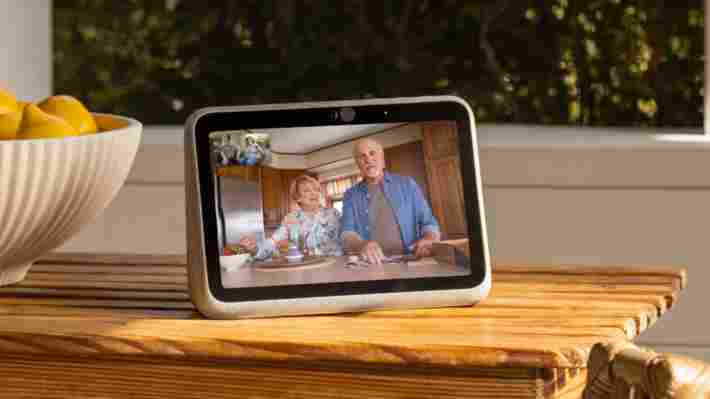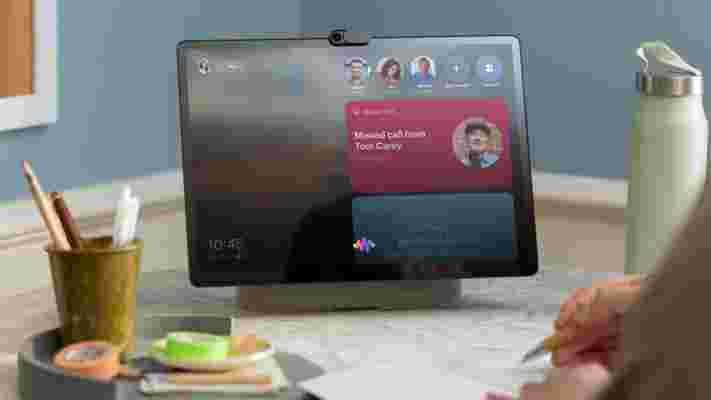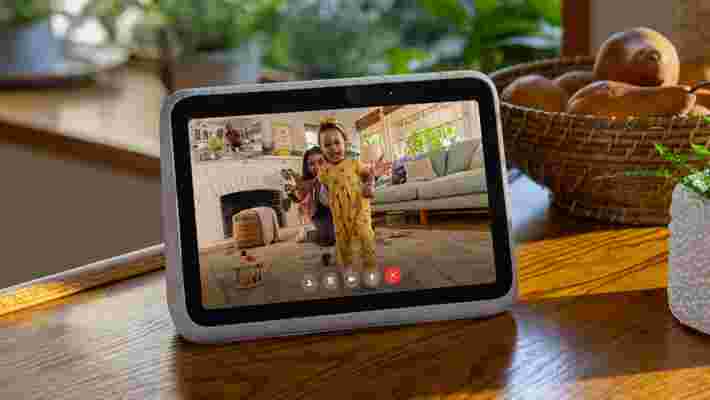Joe Smith Jr. will be putting his WBO light heavyweight belt for the first time, as the native New Yorker finally steps into the ring tonight for his maiden title defence on home turf. Read on as we explain how to watch a Joe Smith Jr vs Steve Geffrard live stream today and catch all the boxing action online from anywhere in the world.
Smith claimed the WBO light heavyweight crown last April after defeating Maxim Vlasov via majority decision - a win that took his career record to 27-3 with 21 KOs.
The 32-year-old had been scheduled to face Umar Salamov as his first defence back in October, only for that date to be nixed after the Long Islander tested positive for Covid. Their rescheduled meeting was due to take place tonight, but Salamov was forced to pull out after failing to obtain a visa from his native Russia in time.
Callum Johnson was drafted in as Salamov's replacement, but the British former 175-pound title challenger was also forced to drop out earlier this week after contracting coronavirus.
That means opportunity knocks for short-notice stand-in Steve Geffrard. The 31 year-old is unbeaten since 2013 with a 18-2 record that includes 12 knockouts, but his main credential coming into this fight appears to be his experience as a spar partner for unbeaten unified 175-pound beltholder Artur Beterbiev.
You can watch all of the action from New York unfold, no matter where you are, by following our guide below to watch a Smith Jr vs Geffrard live stream online from anywhere.
How to watch Joe Smith Jr vs Steve Geffrard from outside your country
There are some great ways of watching Joe Smith Jr vs Steve Geffrard all over the world but you won't be able to if you're away from home and blocked from your usual service. To get round that, you need to use a VPN to dial into a country that's showing the fight.
VPNs change your IP address making it appear that you're in a completely different location. Here's how to get started.
Use a VPN to live stream Joe Smith Jr vs Steve Geffrard anywhere

How to watch Joe Smith Jr vs Steve Geffrard online in the US

How to watch Joe Smith Jr vs Steve Geffrard: live stream boxing in the UK

How to watch Joe Smith Jr vs Steve Geffrard: live stream boxing in Canada
Can you watch Joe Smith Jr vs Steve Geffrard in Australia?
Sadly there's no confirmed broadcaster for Joe Smith Jr vs Steve Geffrard in Australia at the time of writing. The only alternative is to use one of the best VPN service providers to tap into coverage from another nation, as described above.
The software is generally ideal for this as it allows you to change your IP address and appear to be in a completely different location - and all through a safe, encrypted connection. But do bear in mind that many paid streaming services do require a credit card based in the country the service is from.
Joe Smith Jr vs Steve Geffrard time and date
The Joe Smith Jr vs Steve Geffrard fight takes place on Saturday, January 15 at the Turning Stone Resort Casino, in Verona, New York.
Ring walks for the main event are roughly expected to be as follows.
Joe Smith Jr vs Steve Geffrard ring walk times
Joe Smith Jr vs Steve Geffrard: full card for Saturday's event
Halo Infinite Xbox players are sick of PC crossplay cheaters
Halo Infinite ’s crossplay functionality, which allows Xbox Series X /S users to play with and against PC gamers, is causing ire in the game’s community.
Xbox players are increasingly frustrated with having to face mouse-and-keyboard opponents, as well as the many cheats that are more prevalent among PC players of the game.
As reported by The Verge , fans have been airing their complaints since the game’s multiplayer launched last November, highlighting the cheating of some PC gamers (such as those using aimbots and wallhacks), as well as the advantages that a mouse and keyboard setup has over a controller.
The complaints have continued over the past few months, as players have called on developer 343 industries to make crossplay an optional feature, rather than a permanent, default setting. You don’t have to look far across the Halo Infinite subreddit to find recent frustrations from Xbox players struggling against their PC counterparts.
Although crossplay can be disabled in Halo Infinite’s ranked modes when playing solo, with players given the option to lock matchmaking to controller or keyboard players only, it’s not possible to disable crossplay in the game’s main playlists.
Analysis: a fair request

Crossplay is a tricky feature. Often praised for widening a game’s player base and allowing friends to play together regardless of what consoles they own, its functionality is complicated in the case of a competitive multiplayer shooter like Halo Infinite.
Whether you’re playing ranked or casual, no one wants to face an opponent with an unfair advantage, and it’s difficult to see how PC gamers have anything but that. Even without the cheats that the more unscrupulous players might use, the pinpoint accuracy and motor control of a mouse easily exceed that of a controller’s analog stick.
As many fans have pointed out, the most obvious, and possibly straightforward, solution would be to allow players to opt-out of crossplay should they want to. That’ll allow Xbox and PC buddies to play together when it suits them, while letting other players keep to their own lane.
Although developer 343 Industries hasn’t officially responded to players’ crossplay concerns, it has emphasized that it will be continuing to tweak and update Halo Infinite with quality of life improvements. During its announcement that Big Team Battle matchmaking will be getting a hotfix sometime soon, it said additional anti-cheat updates are in the works, too, with the next major update scheduled to release in mid-February.
Facebook Portal Go vs Facebook Portal Plus: which smart display should you buy?
Love it or loathe it, Facebook (sorry, Meta to use the brand’s new moniker) just won’t quit making smart displays .
The Facebook Portal range of video-calling devices is making an assault on a difficult market due to the popularity of Amazon’s Echo Show and Google’s Nest line of smart speakers with built-in screens, while at the same time carrying Facebook’s difficult history when it comes to privacy concerns.
That still hasn’t deterred the brand from launching even more video-calling devices; late last year saw the arrival of the Facebook Portal Go and the Facebook Portal Plus .
The Facebook Portal Go is a battery-powered version of the brand’s original 10-inch smart display, while the Facebook Portal Plus is a new version of its largest 14-inch device.
The new Portal Plus is more compact than the original, but it doesn’t have many other upgrades, and unlike the Portal Go, it’s still mains powered.
As with the previous Portals, both smart displays stand out when it comes to video-calling - they’re the only ones on the market that let you make WhatsApp and Facebook Messenger video calls.
But aside from their screen sizes and the way they’re powered, you’re probably wondering exactly what the differences are between these two new Facebook Portal devices and whether they’re both worth investing in, or one will suffice. So we pitted the Facebook Portal Go against the Facebook Portal Plus to help you decide.

Best Facebook Portal Go and Facebook Portal Plus deals
Read on to find out just how these smart displays compare – or, if you know which Facebook Portal you want, check out the best prices right now for both products below:
Price
The Facebook Portal Go will set you back $199 / £199 / AU$279 while the Facebook Portal Plus is considerably more expensive at $349 / £349 / AU$519 . However, a larger screen understandably pushes the cost up, so we’re not surprised at the price difference.
The Facebook Portal Go is slightly more affordable than its similarly-sized rivals - the Amazon Echo Show 10 costs $249.99 / £239.99 / AU$ 399.99 while the Google Nest Hub Max is priced at $229 / £219 / $349 .
While Google doesn’t offer a smart display with a screen larger than 10 inches, Amazon’s nearest rival is the Echo Show 15 , which unsurprisingly has a 15-inch display. The Show 15 is also slightly more affordable, costing $249 / £239.99 / AU$399
You might think these two are similar due to the size of the screen, but in actual fact, the Echo Show 15 is initially designed to be a wall-mounted device, although it can be used free-standing if you purchase the additional stand for $29.99 / £29.99 / AU$49.99 - although in total it’s still cheaper than the Portal Plus. The Portal Plus, meanwhile, can’t be mounted to the wall at all.

Design
The Facebook Portal Go and the Facebook Portal Plus certainly differ when it comes to their looks. The wedge-shaped Facebook Portal Go features a 10-inch 1200x800 HD screen on the front of the device, whereas the Portal Plus boasts a 14-inch 2160x1440 14-inch display that appears to be floating on an elliptical-shaped base.
The display on the Portal Plus can also be tilted to ensure it’s at the optimum angle to be seen.
Both smart displays are wrapped in a muted grey mesh fabric that will complement any home decor. Given the larger screen, it’s no surprise the Facebook Portal Plus has a slightly bigger footprint than the Portal Go, measuring 9.87 x 12.31 x 3.86 inches compared to the Go’s more compact size of 10.1 x 6.84 x 3.1 inches.
The Portal Plus is mains-powered, and as well as the power socket also features a USB-C port on the back designed for charging your smartphone. However, the Portal Go is battery-powered - on the base sits an insert for the charging dock, so the smart display remains stable when it's being charged - although there’s nothing to stop you leaving it on this dock the whole time, so it’s always fully charged when you do want to move it around. There's also an integrated handle on the back, which makes it easy to move between rooms.
The two smart displays have the same 12MP camera for video calls, although the Portal Plus has a slightly wider field of view at 131 degrees, compared to the Portal Go’s 125 degree field of view. Both smart displays also boast the same audio set-up, with two 5W full-range speakers and 20W woofer, along with a four-mic array to ensure your voice is picked up clearly when you're on a call.

Features
When it comes to the most basic tasks you’d use a smart display for, both Portal devices are evenly matched. Each allows you to make video calls using Facebook Messenger and WhatsApp as well as conferencing apps such as Zoom, WebEx, and GoTo Meeting.
The cameras are identical and both have the ability to automatically pan and zoom to ensure you’re always in the center of the frame during a video call, even if you get up and move about the room.
On test, we found this feature was extremely smooth when panning and zooming, and we were impressed that for small movements, such as if we shifted in our seat, the camera didn’t attempt to reposition the frame.
As you’d expect, both Portal devices come with access to voice assistants; you’ve got Amazon Alexa, and “Hey Portal” - Facebook’s own offering.
While Alexa can set timers, adjust music playback, and control your smart home devices as well as offering up the latest headlines or sports scores, “Hey Portal'' is more limited. We found it was only able to start video calls, adjust the brightness of the screen, and set timers.
If you’re privacy-conscious, the fact that Facebook records and transcribes anything it hears after the wake word of “Hey Portal” storing it on its servers for three years may not sit well with you. Amazon, on the other hand, offers the ability to delete these recordings instantly from the Alexa app.
For finding information on the web, there’s also a built-in web browser on both smart displays that doubles as a way to watch some video streaming services such as Prime Video and YouTube on the smart display.
However, it isn’t possible to watch Netflix on either Portal. We’ve asked Facebook why this is, but it has yet to elaborate.
Essentially, the only real difference is in the screen size and the resolution, with the Portal Plus being sharper than the Portal Go, and the Portal Go’s ability to be carried from room to room, without needing to be plugged into a power outlet - making moving the unit about during a video call a possibility. That battery will last up to five hours between charges too.
The Portal Go looks a little sleeker than the Portal Plus in our eyes, because the camera is built into the screen creating a flush design. On the Portal plus, the camera unit sits on the top of the thin, delicate screen, somewhat spoiling the minimalist styling.
Verdict
When it comes to choosing between the Facebook Portal Go and the Facbook Portal Plus, how you plan to use the smart display will affect which model you choose.
If you plan on regularly moving the device between rooms, even when on video calls, or want a device that is more sleek and stylish, you should opt for the Facebook Portal Go. It’s also a better option for those on a budget, as it’s more affordable too.
However, for those that plan to use the smart display solely for video calling and want as big a screen as possible, the Facebook Portal Plus will be a better choice. This smart display is also ideal if you plan to watch a lot of YouTube videos or make a lot of video calls with multiple participants. It would, for example, be well-suited as a second screen purely for calls for those that work from home.